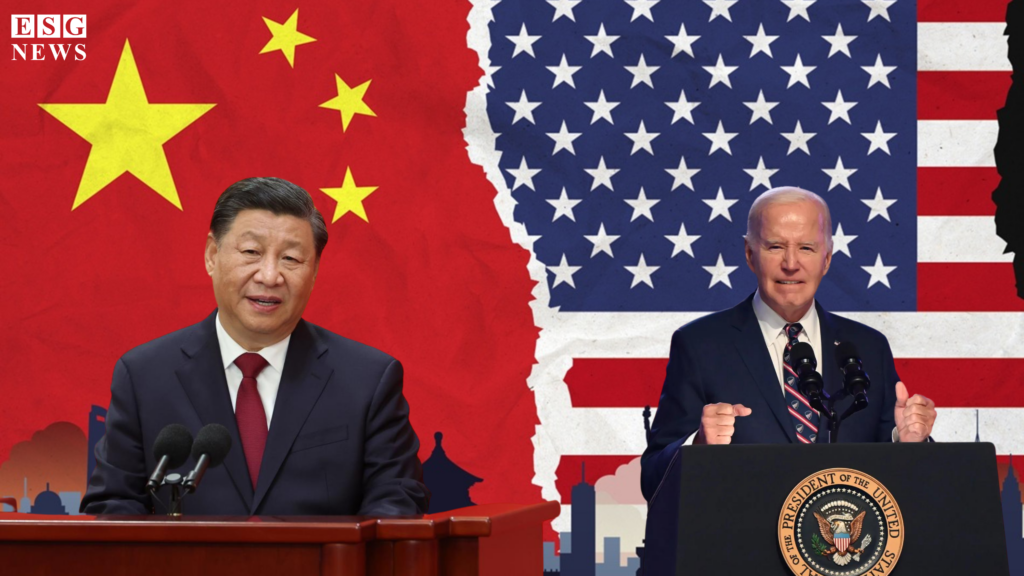Biden Spikes U.S. tariffs on an array of Chinese imports, Including EV batteries

Key Impact Points:
- Tariffs on Chinese imports, including EV batteries, computer chips, and medical products, have been significantly increased by the Biden administration.
- The new measures affect $18 billion worth of goods and include a quadrupling of EV duties to over 100%.
- China’s response includes vows of retaliation, signaling increased trade tensions.
In a bold move aimed at addressing trade imbalances and protecting domestic industries, President Joe Biden announced steep increases in U.S. tariffs on a wide array of Chinese imports, including electric vehicle (EV) batteries, computer chips, and medical products. This action, unveiled on May 14, 2024, is part of a broader strategy to strengthen the U.S. economy and ensure fair competition for American workers.
“American workers can out-work and out-compete anyone as long as the competition is fair, but for too long it hasn’t been fair,” Biden stated during a speech at the White House. He emphasized that the U.S. would not allow China to “flood our market” with underpriced goods.
The new tariff measures affect $18 billion in Chinese goods, with significant increases in duties on key products:
- EV duties will be quadrupled to over 100%.
- Semiconductor tariffs will double to 50%.
- Additional tariffs will impact critical minerals, solar cells, and cranes.
China has vowed to retaliate against these measures. Its commerce ministry declared opposition to the U.S. tariff hikes and promised to take steps to defend its interests. This escalation marks a significant development in the ongoing trade tensions between the two economic giants.
The Biden administration’s actions build on the tariffs imposed by former President Donald Trump, maintaining existing duties while significantly increasing others. U.S. Trade Representative Katherine Tai justified the revised tariffs by citing China’s theft of U.S. intellectual property.
Despite the aggressive stance, Biden emphasized that his goal is not to initiate a trade war but to ensure a competitive environment that benefits American industries and workers. However, analysts have cautioned that the new tariffs could increase costs for EVs, potentially impacting Biden’s climate goals and efforts to boost manufacturing jobs.
Related Article: Biden-Harris Administration Finalizes Rule to Reduce Methane Emissions in Oil and Gas Sector
As the U.S. heads towards the 2024 presidential election, this tariff hike is likely to be a significant talking point, with both Biden and Trump presenting their trade strategies as essential for protecting American interests.
The following is a list of top exports and imports between the two countries by sector:
| SECTOR | PERCENTAGE OF TOTAL IMPORTS FROM CHINA | PERCENTAGE OF TOTAL US EXPORTS TO CHINA |
| Machinery & Mechanical Appliances | 46.40% | 20.10% |
| Miscellaneous Manufactured Items (such as Furniture, Bedding, Lamps, Toys, Games, Sport Equipment) | 12.90% | 0.20% |
| Chemicals, Plastics, Rubber, Leather Goods | 12.00% | 19.50% |
| Textiles, Footwear, Headgear | 10.00% | 2.40% |
| Base Metals, Iron, Steel, Tools | 5.80% | 3.00% |
| Transportation Equipment | 3.70% | 8.40% |
| Optical, Measuring, Medical, Other Instruments | 2.70% | 7.10% |
| Stone, Glass, Metals, Pearls | 1.70% | 2.30% |
| Wood, Cork, Paper, Printed Books | 1.60% | 2.90% |
| Agriculture Products | 1.20% | 23.10% |
| Special Classification Items | 1.00% | 1.10% |
| Oils, Minerals, Lime, Cement | 0.10% | 9.70% |
Source: U.S. Census Bureau USA Trade Portal April 24, 2023












